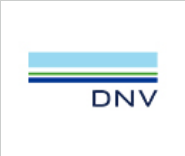Welcome to Sino Bearings web
24x7 HOTLINE:+86-28-81454188

 NEWS
NEWS
With its TMON(Oil lubricated, +) notation, DNV becomes the world’s first classification society to provide a qualified notation that adds another dimension to propeller shaft and bearingcondition monitoring.
The new notation serves to further minimize propulsion safety risk and prevent costly equipment failure, building on the benefits of the existing TMON class notation. Current DNV class notations TMON(Oil lubricated) and Shaft align are pre-requisites to meet the requirements for assignment of TMON(Oil lubricated, +).
Marit Laumann, Head of Section, Machinery & MARPOL at DNV Maritime, said: “This high-level notation is designed to maximise protection of a vessel’s propulsion shafting system. As a forward-leaning organisation and industry leader we are continuously evolving our rules. TMON(Oil lubricated, +) is part and parcel of our holistic focus on long-term proactive damage prevention.”
The industry has been through a challenging decade with an increased number of propeller shaft bearing damages and with varying trends. DNV has been simultaneously implementing respective measures to mitigate the challenges. This is one of the latest steps towards enhanced monitoring and control.
“It is an important development, as an aft bearing damage carries the risk of diminished or total loss of propulsion, expensive repairs and off-hire time, reputational damage and increased insurance premiums,” said Laumann.
In 2018, DNV introduced its Shaft align(1) and Shaft align(2) notations with prescriptive requirements for propeller shaft aft bearing design, installation and monitoring. Shaft align includes alarms for the rate of bearing temperature rise and incomplete propeller immersion, and facilitates enhanced aft bearing performance during normal and extreme turning operating conditions.
“Following the positive industry reception of the Shaft align notation, we saw the opportunity to add even more value by combining both Shaft align and TMON notations to offer enhanced monitoring dimensions, design and operating margins through the new notation,” said DNV Maritime Senior Principal Engineer, Arun Sethumadhavan.
“The aim of the new notation is to raise the level of monitoring even higher to ensure optimal performance of the stern tube bearing. More influencing factors can be monitored in a proactive approach towards failure detection warning. Picking up early signs of, for example, increasing bearing temperature and undesired operational conditions such as incomplete immersion of the propeller, are crucial.
“The new dimension also attends to aft sealing system monitoring with a focus on ensuring lubricant quality and sealing performance depending on the type of seal used. A proactive approach towards the first line barrier of defence has great potential to minimise the threat to the loss of integrity of the stern tube bearing lubricant system and consequences i.e., bearing damages and/or leakage of oil to the sea,” Sethumadhavan added.
Many DNV-classed vessels in operation are eligible for the upgraded notation since they already carry the Shaft align(1) and TMON(Oil lubricated) notations. DNV is already in discussion with a number of owners with a view to upgrading their vessels. More ships currently under construction with the above combination of class notations will be considered for the upgrade once they are delivered into the operational phase. The new notation will be offered for new contracts in the new building phase.
Sethumadhavan explained that TMON(Oil lubricated, +) is not just another ‘plus’ qualifier, but a monitoring and control dimension on one of most important components safeguarding the propulsion function. Operators have the possibility to achieve enhanced monitoring of their own vessel systems, preserving the lifetime of the asset through picking up early warning signs and preventing issues that can lead to damage.
Rajiv Prabhakar, Fleet Director, Eaglestar, said: “Safety, efficiency and reliability are paramount to us at Eaglestar. As the operators of the first set of vessels in service which will be assigned the TMON(Oil lubricated, +) class notation, we are certainly looking forward to experiencing the benefits it will bring towards enhancing the vessels’ safety and operational performance. Furthermore, we now also see an added dimension, which will reflect the impact of our efforts to have both Shaft align(1) and TMON(oil lubricated) class notations in place when the vessels were built.”